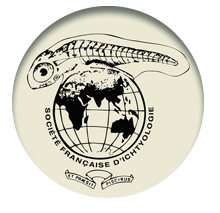Feeding habits of common pandora Pagellus erythrinus (Sparidae) from eastern central Adriatic Sea
The diet of common pandora, Pagellus erythrinus (Linnaeus, 1758), from the central Adriatic Sea, was investigated with respect to season and fish size. Stomach contents of 798 specimens, total length (TL) of 9.2-26.1 cm, collected from commercial bottom trawls from January to December 2009 were analysed. The prey items identified in the stomachs belong to seven major groups: Decapoda, Bivalvia, Polychaeta, Euphausiacea, Teleostei, Mysidacea and Cephalopoda. Decapods were the most important ingested prey (%IRI = 79.3), especially in medium sized fish (TL = 13-21 cm). Polychaetes constituted the main prey item of smallest fish (< 13 cm TL) while decapods together with teleosts dominated the stomach contents of larger specimens (> 21 cm TL). The shrimps Alpheus dentipes (%IRI = 3.2) and Processa canaliculata (%IRI = 2.0), and the polychaet Aphrodite aculata (%IRI = 0.9) were the most frequent prey. Diet of common pandora indicated high similarity between sampling locations. Diet composition showed little seasonal variation, with decapods being the most important prey during summer. The percentage of empty stomachs showed seasonal variation with maximal occurrence in winter (48.9%) and minimal in summer (19.0%). The lowest feeding frequency could be related to low sea temperatures during the winter and with spawning period throughout spring. The stomach contents of common pandora indicate that this species could be considered as generalist predator.


